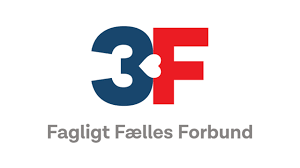The term “3f” is commonly used in various industries, particularly in engineering and technology. It refers to a specific measurement or standard that is important in technical processes or calculations. By understanding the significance of 3f, professionals can enhance accuracy in their projects and improve the overall outcome of their work.
3f also plays a role in business and strategic planning. Companies often incorporate the concept of 3f when optimizing workflows, managing resources, or improving productivity. By integrating 3f into business practices, organizations can achieve greater efficiency and alignment with industry standards.
What is 3f and how is it used in different industries?
The concept is widely used in different industries, particularly in engineering, manufacturing, and design. It represents a standardized measurement or calculation that ensures precision in technical processes. By incorporating this approach, professionals can maintain consistency and improve the quality of their work.
This principle is applied to optimize workflows, reduce errors, and enhance productivity. Its use helps businesses align with industry norms and stay competitive by improving operational efficiency. Whether in product development or resource management, the application of this concept contributes to more streamlined operations and higher standards of excellence.
How does 3f impact technological advancements?
This concept of 3f plays a crucial role in driving technological advancements, especially in fields such as robotics, AI, and machine learning. By implementing standardized frameworks, industries can push the boundaries of innovation and achieve faster, more efficient results. The ability to apply these principles allows for the development of cutting-edge technologies that are scalable and adaptable to evolving market needs.
This approach facilitates the integration of new technologies into existing systems, promoting continuous improvement. As industries adopt more advanced tools and techniques, they become more capable of producing high-quality, precise outputs. This not only accelerates technological development but also ensures that new innovations meet rigorous performance standards.
What are the benefits of using 3f in engineering?
- Improved Efficiency
The adoption of 3f principles allows engineers to streamline processes, minimizing downtime and maximizing productivity in projects. - Cost Reduction
By optimizing workflows and reducing resource wastage, 3f helps lower costs, making engineering projects more budget-friendly. - Enhanced Precision
Using this framework improves the accuracy of designs and calculations, ensuring that the end product meets exact specifications. - Faster Time-to-Market
Engineering projects become more agile, enabling quicker prototyping and product release times by adhering to standardized systems. - Scalability
The 3f framework is adaptable, making it easier to scale engineering solutions to larger operations without compromising quality or performance. - Better Resource Management
Efficient management of materials, labor, and equipment is achieved, leading to more effective use of resources. - Increased Collaboration
3f encourages cross-disciplinary collaboration by providing a common framework for engineers, designers, and manufacturers to work together seamlessly. - Improved Quality Control
Consistency in processes ensures higher quality standards across all stages of product development, from design to manufacturing. - Sustainability
By optimizing resource use and reducing waste, 3f supports more sustainable engineering practices, helping reduce environmental impact. - Innovation Encouragement
The structured approach provided by 3f creates room for creative problem-solving, fostering innovation while maintaining efficiency. - Risk Mitigation
Standardized procedures and clear workflows help in identifying and managing risks early in the project lifecycle, reducing the chances of failure. - Flexibility in Design
Engineers are able to adapt and make changes to designs swiftly, without the need for major revisions, due to the flexibility inherent in 3f principles. - Increased Customer Satisfaction
Consistently high-quality products and faster delivery times lead to improved customer satisfaction and greater trust in the engineering solutions provided. - Better Documentation
3f requires meticulous record-keeping, which helps engineers track changes, monitor progress, and maintain thorough documentation throughout the lifecycle of a project. - Enhanced Performance Monitoring
By implementing 3f frameworks, engineers can continuously monitor and fine-tune systems, ensuring optimal performance during both testing and actual usage.
Is 3f a standard measurement or concept in any specific field?
In certain fields like engineering and manufacturing, there are concepts and frameworks that are structured to optimize processes and efficiency, though they may not necessarily be recognized as a standardized measurement across industries. These concepts are often built on principles that enhance productivity, cost-effectiveness, and precision. They focus on improving overall system performance, from design through production, ensuring consistency and scalability across different applications.
Such as technology or industrial design, these principles may not be formalized as an official standard, but they are widely applied to create uniformity in operations. Professionals rely on them to ensure that products meet specific requirements, work within predetermined systems, and can adapt to changes quickly. As such, these concepts help in managing complexity while maintaining high levels of quality and efficiency.
How can 3f be applied to business strategies?
In business strategies, applying concepts of efficiency, flexibility, and focused execution can significantly enhance decision-making and overall performance. Companies can optimize their operations by streamlining processes, reducing waste, and ensuring that their resources are used in the most productive way. This approach helps businesses adapt to changing market conditions while maintaining a strong competitive edge.
The ability to align business goals with customer needs and operational capabilities allows organizations to implement strategies that are both scalable and sustainable. By focusing on key performance areas such as customer satisfaction, cost management, and innovation, businesses can improve their bottom line. This strategic application creates a well-rounded, responsive framework that drives long-term success.
What are the key challenges in implementing 3f in projects?
Implementing strategies that emphasize efficiency, flexibility, and focused execution can face several challenges in projects. One key difficulty is balancing the need for streamlined operations while maintaining enough flexibility to adapt to unexpected changes or challenges. This tension can lead to conflicts in decision-making, especially when trying to prioritize speed over thoroughness or vice versa.
Another challenge is ensuring that all stakeholders are aligned with the project’s goals and methods of execution. Without clear communication and consistent leadership, maintaining focus can become difficult, especially in complex projects with multiple moving parts. Furthermore, resource constraints and the complexity of scaling strategies to fit different project sizes can create obstacles in achieving optimal results across the board.
Click here for more details.
Conclusion
Implementing strategies that prioritize efficiency, flexibility, and focus can significantly enhance project outcomes. However, these approaches require careful management of resources, clear communication, and the ability to adapt to unforeseen challenges. Overcoming these obstacles ultimately leads to more successful project execution and long-term business success.












